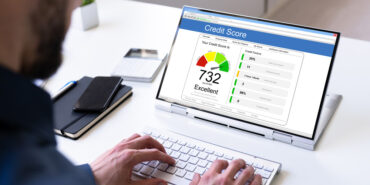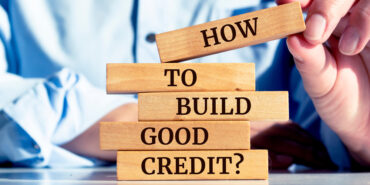Is Your Credit Utilization Too High? Here’s How to Improve It.

It’s that time of month when all of your bills are due. You managed to pay your rent, utility bills, auto loan, and even squeeze in a credit card payment. Your bills have all been paid, and more importantly, paid on time. You’re in a good spot, right?
Paying your bills on time is key to keeping your finances in order. However, when was the last time you took a step back and looked at the big picture? Do you still have an outstanding credit card account balance? What about your student loans? Your mortgage? These personal loans may be dragging you down more than you think.
Learn How To Improve Your Credit Score
With Zogo, financial education is informative and rewarding. Start your journey to financial mastery today and see where Zogo can take you!
Discover strategies to improve your credit score.
Debt and your credit score
Paying your debt on time is the most important part of your credit score, but almost as important is the amount of debt you take on. This part of your credit score is called credit utilization.
Credit utilization is the amount of revolving credit you’re using from your total available credit. For most people, this involves credit cards. This differs slightly from your debt-to-income ratio, which takes into account all of your debt.
Your credit utilization determines your credit utilization ratio; in other words, the percentage of your available credit that you have borrowed.
What is your credit utilization ratio?
Your credit utilization is usually calculated by dividing the total amount of revolving debt you owe from your total available credit and multiplying it by 100.
For example, if you have a credit limit of $1,000 and have made $400 worth of purchases this month, your credit utilization is 40%.
Your credit utilization ratio is used by lenders to gauge your creditworthiness. If your ratio is too high, it looks as if you depend too much on your credit. This can make lenders more hesitant to issue you a loan, because they may think you’ll be unable to pay them back.
What’s considered a good credit utilization ratio?
Typically, the golden rule in credit scoring is to keep your credit utilization ratio as low as possible and no more than 30%.
Staying far away from your credit limit is the key to improving and maintaining a good credit utilization ratio, which will help your credit score. The closer you are to the credit limit, the riskier you look to lenders.
If you use $950 of your $1,000 credit limit it implies you need more than the amount they’ve given you. It makes it look as if it would be a stretch for you to repay the money when you spend up to the limit.
“Treat your credit card like an inconvenient debit card,” says Phil Schuman, Executive Director of Financial Wellness & Education at Indiana University and Executive Director of the Higher Education Financial Wellness Alliance (HEFWA). “You wouldn’t spend money you didn’t have. Even if your credit limit is higher than what you have, only spend what’s in your bank account.”
People with nearly perfect FICO credit scores have an average credit utilization ratio of 10% on their credit cards, according to Experian.
How to improve your credit utilization ratio
If you are using a large percentage of your revolving credit, it may be dragging down your credit score. There are some ways borrowers can lower their credit utilization; however, you will want to weigh the pros and cons depending on your situation. Here are three to get started.
No. 1: Open a new credit card
If you’re in a good financial position, opening a new credit card can help your credit utilization ratio by giving you more available credit, thereby lowering your overall credit utilization, but only if you can manage this new increase responsibly. If you are planning to use the new credit card as justification to spend more money, it won’t be beneficial to your financial situation, so keep an eye on your total balance.
“Be responsible using one credit card, then get a second one,” Ramon DeGennaro, Ph.D., a Professor of Finance at the University of Tennessee, Knoxville. “You don’t want to wait until you have a low score and then have to get another one.”
With a new credit card, you can spread out your debt, which can help improve your ratio.
Instead of putting $500 on a single credit card with a $1,000 limit, if you open another card with a $1,000 limit, you can put $250 on each card. This will shift your ratio from 50% to 25%.
Having a second credit card can also serve as a backup if you misplace the other one.
No. 2: Pay your balance before it’s due
Your credit utilization changes as you make purchases and pay off your card. If you’re not carrying over a balance, your ratio may be low near the beginning of the month, as you haven’t made a lot of purchases on your card yet.
Most credit card issuers report your balance to credit bureaus when your bill is due, but some card issuers may report it at different times in the billing cycle. If you pay your balance before your credit card company reports it or pay prematurely, it can positively impact your ratio.
Make it a habit to pay off your credit card balance every time it hits a credit utilization that exceeds the recommended amount. Setting up a balance alert on your account will notify you when you're about to hit that number. When you pay down the balance in small increments, you can maintain a lower credit utilization ratio.
No. 3: Ask for a limit increase
If your income goes up or it’s been a long time since you opened your credit card, it may be time to ask for a higher line of credit.
Credit card issuers may do a hard inquiry to determine if you qualify for a credit limit increase, which could knock off credit score points. They will factor in things like your spending patterns, payment history, and credit report.
If you don’t think youll be able to control your spending with a higher credit line, this probably isn’t the best financial decision for you, as increasing your credit card debt will hurt your credit score.
“If raising your credit card limit will just give you a license to spend more, then it’s probably better that you don’t give yourself an opportunity to take on more debt,” Schuman says.
What can hurt your credit utilization ratio?
A variety of factors and decisions can impact your credit utilization ratio, including the following:
No. 1: Using all of your available credit
One of the biggest misconceptions about your credit limit is that as long as you don’t spend above your credit limit, your credit score will be okay. While this sounds right, you need to stay significantly under your credit card limit to maintain a good credit score.
Even if you pay off your card weekly, every credit bureau and credit scoring system factors the use of credit differently. Just because you used $600 of your available $1,000 credit limit and paid it off immediately doesn’t mean you are automatically in the clear.
“In general, you should err on the side of caution,” Schuman says. “You don’t know exactly how they’re going to look at your use of credit.”
No. 2: Chasing rewards and credit card points
The more you spend, the more reward points you earn, but if you inch closer and closer to your credit card limit for the sake of points, it can hurt your score. Receiving 1% cashback isn’t worth the reward if it dings your credit score as it can make borrowing more expensive in the future.
“Don’t just use a credit card for the cashback,” Schuman says. “The companies know this is how you spend more money.”
No. 3: Closing a credit card
Closing a card can shift your credit utilization ratio if your debt is spread across several credit cards. Closing a card decreases your available credit. If you’re trying to get your spending under control, this could be worth it in the long run.
No. 4: Overspending
Your credit utilization is tied directly to your credit card spending. It may seem too simple, but decreasing the purchases on your credit card can make an impactful difference to the ratio.
“Most people in financial trouble don’t have an income problem. They have a spending problem,” DeGennaro says.
The bottom line
While credit utilization is an important factor to monitor, your payment history trumps it. For this reason, opening a new card or increasing your credit card limit should only be done if you can pay on time.
If you miss a payment, call your credit card company immediately. Many credit card companies want to work with you.
“There’s no shame in groveling to fix a mistake you made with your credit card company,” DeGennaro says. “Do anything you can from having it hurt your credit score.”

Ramon P. DeGennaro is the Haslam College of Business Professor of Finance at the University of Tennessee, Knoxville. His research involves financial markets and institutions, financial regulation, small-firm finance, and public policy.

Phil Schuman serves as Executive Director of Financial Wellness & Education at Indiana University and Executive Director of the Higher Education Financial Wellness Alliance (HEFWA). He is also the co-creator of MoneySmarts U, an interactive financial education platform that provides financial education to college students across the country.






